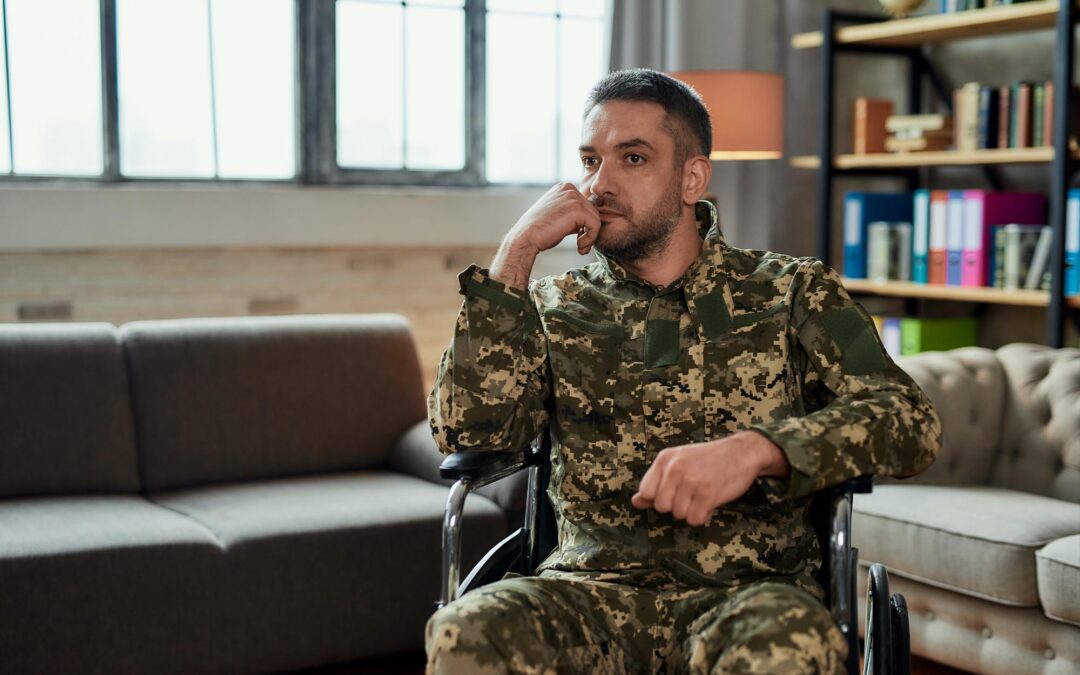Understanding Anxiety and Its Impact on Daily Life
Anxiety is your body’s natural response to stress – a feeling of fear or apprehension about what’s coming next. While occasional anxiety helps you stay alert and focused, persistent anxiety can disrupt your daily activities.
Common Physical Symptoms:
- Racing heart rate
- Excessive sweating
- Restlessness and trembling
- Rapid breathing
- Difficulty sleeping
- Digestive problems
Your daily life can change dramatically when living with anxiety. Work performance often suffers as concentration becomes challenging and decision-making feels overwhelming. Simple tasks like grocery shopping or attending social events can trigger intense worry.
Impact on Key Life Areas:
- Work: Missing deadlines, avoiding presentations, difficulty concentrating
- Relationships: Canceling plans, withdrawing from loved ones, communication struggles
- Self-care: Disrupted sleep patterns, changes in eating habits, neglecting exercise
The physical tension that accompanies anxiety can leave you feeling exhausted. Your muscles might remain tight throughout the day, leading to headaches and body aches. These symptoms create a cycle – physical discomfort increases mental distress, which then intensifies physical symptoms.
Recognizing anxiety’s impact on your life is the first step toward managing it effectively. Many people live with anxiety without realizing its influence on their daily functioning and relationships. Understanding these effects helps you identify when to seek support and develop appropriate coping strategies.
If you’re struggling with anxiety, consider exploring various therapy modalities that could help manage your symptoms effectively. The Advanced Therapy Center in Medford, MA offers a variety of evidence-based therapy options to address a wide range of mental health conditions.
In addition to therapy, it’s essential to utilize available mental health resources in your area. These resources can provide valuable support and guidance as you navigate through your mental health challenges.
Different Types of Disorders
The DSM-5 recognizes several distinct anxiety disorders, each with unique manifestations and diagnostic criteria:
1. Generalized Anxiety Disorder (GAD)
- Persistent worrying about multiple aspects of life
- Difficulty controlling anxious thoughts
- Physical symptoms including muscle tension and fatigue
- Present most days for at least 6 months
2. Social Anxiety Disorder (SAD)
- Intense fear of social situations
- Avoidance of social interactions
- Fear of judgment or scrutiny from others
- Physical symptoms like blushing, sweating, trembling
3. Specific Phobias
- Intense fear of particular objects or situations
- Common examples include:
- Heights (acrophobia)
- Flying (aerophobia)
- Animals (zoophobia)
- Blood/injections (hemophobia)
4. Panic Disorder
- Recurring unexpected panic attacks
- Physical symptoms including:
- Racing heart
- Chest pain
- Shortness of breath
- Feeling of impending doom
5. Agoraphobia
- Fear of places or situations where escape might be difficult
- Anxiety about using public transportation
- Discomfort in open or enclosed spaces
- Often leads to avoiding triggering situations
These disorders can present independently or co-occur with other mental health conditions. Each type requires specific diagnostic criteria and treatment approaches tailored to its unique characteristics.
Causes and Risk Factors
Anxiety disorders are caused by a combination of biological, psychological, and environmental factors. Research has identified several key contributors to their development:
1. Traumatic Experiences
Experiencing traumatic events can significantly increase the risk of developing an anxiety disorder. Some common traumatic experiences include:
- Childhood abuse or neglect
- Witnessing violent events
- Natural disasters
- Loss of loved ones
- Military combat exposure
- Physical or emotional assault
2. Hereditary Factors
Genetics play a role in the development of anxiety disorders. Here are some hereditary factors that can contribute:
- Family history increases the risk by 30-50%
- Genetic variations affect neurotransmitter function
- Inherited personality traits like neuroticism
- Shared biological vulnerabilities with other mental health conditions
3. Environmental Stressors
Certain stressors in your environment can also contribute to the onset or exacerbation of anxiety disorders. These include:
- Chronic workplace pressure
- Financial instability
- Relationship difficulties
- Major life changes
- Substance use
- Sleep deprivation
- Poor work-life balance
4. Early Life Influences
The experiences and influences during early life can shape an individual’s vulnerability to anxiety disorders. Some early life factors include:
- Unstable home environment
- Overprotective parenting styles
- Limited exposure to stress-coping strategies
- Academic pressures
- Social isolation
- Bullying experiences
These factors can sensitize your brain’s stress response system, leading to heightened reactions. Additionally, physical health conditions such as thyroid problems, heart arrhythmias, and chronic pain can trigger or worsen anxiety symptoms.
Understanding these causes and risk factors is crucial for healthcare providers in developing targeted treatment approaches tailored to each individual’s unique situation. Such an approach often involves a multifaceted treatment strategy, which may include therapy, medication, lifestyle changes, and support for underlying health issues.
Gender Differences in Experiencing
Research consistently shows that women face a higher risk of developing anxiety disorders compared to men, with studies indicating nearly twice the prevalence rate among female populations. This gender disparity stems from multiple factors:
Biological Influences
- Hormonal fluctuations during menstruation, pregnancy, and menopause
- Different brain chemistry responses to stress
- Variations in neurotransmitter systems
Social and Cultural Factors
- Increased likelihood of experiencing sexual trauma or abuse
- Greater societal pressure regarding appearance and social roles
- Higher rates of work-life balance challenges
Men and women also display distinct patterns in how they express and cope:
Women typically:
- Report physical symptoms more openly
- Seek professional help more frequently
- Experience more intense somatic symptoms
- Show higher rates of comorbid depression
Men typically:
- Mask through anger or irritability
- Self-medicate with substances
- Avoid seeking professional support
- Express through work-related stress
These gender-specific manifestations often lead to underdiagnosis in men, as their symptoms may not align with traditional criteria. Cultural expectations of masculinity can create additional barriers for men seeking treatment, while women might face dismissal of their symptoms as “emotional reactions.”
Moreover, these experiences are often shaped by gender norms which dictate how individuals should behave based on their gender. Additionally, the role of biological factors cannot be overlooked as they significantly influence the prevalence and manifestation of anxiety disorders among different genders, as highlighted in this study.
The Wide-Ranging Effects of Untreated
Untreated disorders create a ripple effect, impacting multiple aspects of a person’s life and health. Many individuals develop co-occurring conditions as they struggle to manage their symptoms:
- Depression: The persistent worry and fear characteristic of anxiety often lead to feelings of hopelessness and depression
- Substance Use Disorders: People frequently turn to alcohol or drugs as a form of self-medication
- Eating Disorders: Anxiety can trigger disordered eating patterns as a coping mechanism
The physical toll of chronic anxiety manifests through:
- Weakened immune system
- Digestive problems
- Chronic fatigue
- Sleep disturbances
- Muscle tension and pain
Long-term consequences of untreated anxiety extend into social and professional spheres. Many individuals experience:
- Social Withdrawal: Avoiding social situations, leading to isolation
- Career Impact: Decreased work performance and missed opportunities
- Relationship Strain: Difficulty maintaining connections with family and friends
In severe cases, untreated anxiety can escalate to suicidal thoughts. Research shows that individuals with anxiety disorders face a significantly higher risk of suicide attempts compared to the general population. The combination of isolation, physical symptoms, and co-occurring disorders creates a complex web of challenges that requires professional intervention.
Effective Treatment Options for Managing
Professional treatment approaches offer proven pathways to manage anxiety disorders effectively. Cognitive-behavioral therapy (CBT) stands as a primary therapeutic intervention, helping you identify and reshape anxious thought patterns. During CBT sessions, you’ll learn practical techniques to challenge negative thoughts and develop healthier responses to triggers.
Key Therapeutic Approaches:
- Exposure therapy – gradual, controlled exposure to anxiety-inducing situations
- Dialectical behavior therapy (DBT) – skills for emotional regulation and mindfulness
- Group therapy – shared experiences and peer support in a therapeutic setting
Medication can play a vital role in severe anxiety cases. Selective serotonin reuptake inhibitors (SSRIs) and benzodiazepines work to balance brain chemistry and reduce anxiety symptoms. Your healthcare provider will determine the most suitable medication based on your specific symptoms and medical history.
Self-Help Strategies for Daily Management:
- Regular physical exercise (30 minutes, 3-5 times weekly)
- Mindfulness practices and meditation
- Consistent sleep schedule (7-9 hours nightly)
- Balanced nutrition and limited caffeine intake
- Deep breathing exercises
- Stress-reduction techniques
These treatment approaches work best when combined. A comprehensive treatment plan typically includes professional therapy, appropriate medication when necessary, and consistent self-care practices. Regular check-ins with mental health professionals help adjust treatment strategies as your needs change.
Current Research Advancements in Understanding
Recent genetic studies have revealed fascinating insights into anxiety disorders. Research published in Nature Genetics identified specific gene variations linked to anxiety susceptibility. These studies show that individuals carrying certain genetic markers face a 26% higher risk of developing anxiety disorders.
Scientists have mapped several key genetic pathways:
- CRHR1 gene: Controls stress hormone regulation
- SLC6A4: Influences serotonin transport
- COMT: Affects dopamine processing
Environmental factors interact with these genetic predispositions differently across life stages:
Childhood (0-12 years)
- Parental attachment styles
- Early trauma exposure
- Educational environment quality
Adolescence (13-19 years)
- Peer relationships
- Academic pressure
- Social media exposure
Adulthood (20+ years)
- Workplace stress
- Financial pressures
- Relationship dynamics
Research from the National Institute of Mental Health demonstrates that environmental triggers can activate or suppress anxiety-related genes. This “gene-environment interaction” explains why some individuals with genetic risk factors develop anxiety disorders while others don’t.
The latest brain imaging studies have identified specific neural circuits involved in anxiety responses, opening new possibilities for targeted treatments. These discoveries are driving the development of personalized therapeutic approaches based on both genetic profiles and environmental factors.





